ELECTRIC MAGIC AT THE EMPIRE POOL WEMBLEY & LED ZEPPELIN IV – IT WAS 49 YEARS AGO/MSG 1975 CINE FILM/LZ NEWS/PETER GRANT 25 YEARS GONE/KNEBWORTH BOOK LAUNCH 2013/DL DIARY BLOG UPDATE
ELECTRIC MAGIC 49 YEARS GONE:
November 21st is always a bit of a special date in my calander year – as it was on this day back in 1971 that I was lucky enough to witness Led Zeppelin live at the Empire Pool Wembley –and as you will read, nothing was ever the same in our house after that. Over the next few days I’ll be wading through the Empire Strikes Back Tarantura CD box set to recall the night the Wembley Empire Pool was, as the Melody Maker headline ran ‘Zapped by Zeppelin…’
Here’s some personal reflections…
Schoolboy wonderment, Wally, Pigs and Plates at the Pool
49 years ago this week I first witnessed the pure live power of Led Zeppelin when I attended the second Electric Magic show at the Empire Pool Wembley on the evening of Sunday November 21st 1971. I was just 15 years old –the effect would be a lasting one. Looking back one of the things that stands out from that time is that Zep had a ‘’leaders of the underground’’ stigma about them.
This was the latter period of the UK underground scene –the famous Oz obscenity trial was a only a couple of months before and on that November night there hung a heady atmosphere as London’s counter culture elite came out to see them. This feeling of being amongst the counter culture was enhanced by the presence of a large stall within the Empire Pool for Virgin Records Richard Branson’s newly inaugurated discount record retail operation. They were proudly selling the new Led Zeppelin album in that mysterious sleeve. There was also the famous Electric Magic poster on sale for all of 30p which now changes hands for upwards of a grand. I wish I’d brought more than one!
This was the night Home and Stone The Crows were the support acts and during both sets their respective guitarists took out a violin bow and briefly did a ‘’Jimmy’’ in mock respect for what would occur later. The in between entertainment was provided by the infamous performing pigs that didn’t and the plate spinner Olley Gray who also didn’t fare too well. Warm up records played by DJ Jeff Dexter included Redbone’s Witch Queen Of New Orleans and Isaac Hayes’ Shaft – both hits of the time (Page would insert the riff of Shaft into their version of Dazed And Confused the next week in Manchester.
There were frequent cries from the audience of ‘’Wally’’ a gig going tradition sparked by a roadie at the 1970 Isle of Wight Festival. Never around when needed, the road crew cries of ‘’Where’s Wally?’’ was taken up by the festival audience – and ensuing audiences at big name gigs such as this one.
Then it was time for the main event. Promoter Ricky Farr introduced them and it was evident how loud it was going to be from the moment Bonzo rattled around the kit and Jimmy flexed the Gibson. Then 1 -2-3-4 …Blam!
I was watching Led Zeppelin perform Immigrant Song in front of my own eyes…and nothing was ever the same again.
And nothing was ever this loud. The sheer force of the riff physically pushed me back. After the initial shock of that moment, well the rest of proceedings for this particular schoolboy were just awe inspiring. I watched it all with open mouthed wonderment.
So many vivid images remain from that first stunning exposure to the grown up music world. The immediate upturn of seeing this thing in the flesh was that my interest increased manifold. The scrapbooks became more meticulous, the hunger for knowledge about them more intense and the need to follow their every move a virtual means to an end. It was a year of waiting before they returned to the UK and I saw them at Alley Pally and then came five glorious nights at Earls Court and more. By then journalistic reporting of Zep in the Melody Maker and NME by the likes of Roy Hollingsworth, Nick Kent and Charles Shaar Murray had inspired me to put pen to paper myself and the seeds of Tight But Loose were being sown.
Ultimately it was that night back in November 1971 that sparked the insatiable belief in their music that has stayed with me ever since. It was a night of true Electric Magic and the intervening 49 years have done nothing to diminish its impact.
Back then at 15 years old, I knew I had witnessed something very special –but little did I realize that 49 years hence at aged 64, Led Zeppelin would still mean so much to me and countless millions across the world.
Then as now… they still hold the (Electric) Magic….
Dave Lewis –
……………………………
TBL Archive Special:
Led Zeppelin IV – 49 years gone…
November 1971 /Led Zeppelin IV
49 years ago this month the fourth Led Zeppelin album emerged in a slightly mysterious manner with that enigmatic sleeve. I vividly remember the excitement and anticipation of the album in the music press that month. In fact the November 6 1971 issue of Melody Maker was something of an historic issue because it contained the first UK sighting the four individual symbols that would make up the title of Led Zeppelin’s fourth album. Each symbol was featured on the end of a page – a series of teaser adverts for the forthcoming album though nobody really knew it. Now I had read a recent interview with Jimmy Page in which he had explained the album title would be made up of four runes – I did notice those symbols in that issue thinking they looked very odd – but I did not realise these were the very symbols that would become such an integral and lasting image of the band.
It was about to get even more exciting for me with the prospect of attending the November 21 Wembley Empire Pool show. Tickets a mere 75p! It’s fair to say that this advert announcing the second date was something of a life changer for me – as things were never quite the same in our house after what I witnessed on that cold November Sunday evening all of 49 years ago.
This wasn’t just a band…
Here’s some Led Zeppelin IV observations from the TBL Archive:
Of all their records, Led Zeppelin’s fourth album, released in late 1971, remains their listened toand admired work, and with sales of 38 million and counting it is also far and away their most successful. Featuring both the often maligned Stairway To Heaven and the widely admired ‘When The Levee Breaks’, the set is without question the most accessible of their catalogue and it continues to attract new listeners by the week. Few albums in the history of rock can rival its influence.
The fact that much of the album was made in a mysterious, run-down, 18th century workhouse in the middle of rural Hampshire only adds to its legacy. It’s the product of a band given absolute musical freedom to do as they wished in an environment that encouraged the development of their ability to blend acoustic and electric influences within a rock framework, which they did more successfully than any other act before or since.
As a complete work it remains their most focused statement. From Page’s unimpeachable riffs, through Jones musical invention and Plant’s clarity of vocal to that titanic John Bonham drum sound – Led Zeppelin IV still emits a freshness that belies its age.
DL
Led Zeppelin IV – 49 years gone…
To mark the 49th anniversary of the release of Led Zeppelin IV here’s a TBL archive feature – first compiled for TBL issue 15 though not used at the time – it eventually appeared in the my Celebration II – The Tight But Loose Files book.
The Making Of Led Zeppelin IV – Part One:
On the evening of Saturday, September 19, 1970, the four members of Led Zeppelin took a final bow before leaving the stage of New York’s Madison Square Garden. It signalled the end of a massively successful US tour, their two performances at the Garden alone netting each of them around $30,000 – not bad for six hours work. Their second album had been a fixture on the album charts on both sides of the Atlantic, racking up sales of over a million in both territories. The previous June the group’s bill topping appearance at the Bath Festival had cemented their reputation on home soil. Readers of the then hugely influential Melody Maker had just voted them as the top act in their annual pop poll, ending years of dominance by The Beatles.
There was simply no doubt about it. Led Zeppelin were now the biggest band in the world.
Then came the backlash…
In early October their eagerly awaited new album, Led Zeppelin III, hit the stores. Its bold agenda in combining the familiar, trademark heavy rock dynamics with more acoustic textures confused both the public and press alike. Headlines such as “I… 2… 3 Zep weaken” were rife as this new direction confused and, to some degree disappointed, critics.
Though Zep III sold well initially it did not to have the across-the-board appeal of their first two albums. Never entirely at ease with the press, Page and Plant were particularly sensitive to the criticism. “The headlines are saying Zep goes soft on their fans or some crap,” remarked Plant to Record Mirror at the time. “The point is when you begin a new album you never knew how it’s going to come out.”
For Page the third Zeppelin album signalled the beginning of a new era. “There is another side to us. This album is totally different to the others and I see this as a new direction.”
Plant again: “Now we’ve done Zeppelin III the sky’s the limit. It shows we can change, we can do things. It means there are endless possibilities. We are not stale and this proves it.”
Brave fighting talk – but quite how their following would react long term to this new direction was at the time still in question. After the initial glow of success they were at something of a crossroads, making their next album crucial. Page later reflected: “With Zep III we thought we’d made a great album – in fact we knew we had. At the time, though, it was said we had started playing acoustic instruments because Crosby, Stills & Nash had just come through and we were ripping them off. I know the record company expected us to follow up ‘Whole Lotta Love’. But we never made a point of trying to emulate something we had done before.”
Sensibly they took their time in recording the crucial fourth album. To recharge their batteries manager Peter Grant refused all offers to tour over the coming months. This included turning down flat a cool one million dollars to appear on a New Year’s Eve I concert to be relayed across the world via satellite. Years later | Peter Grant noted: “I got approached for the band to perform a show in Germany on New Year’s Eve 1970 that would be relayed to American cinemas. The offer got up to a million dollars but I found out that satellite sound can be affected by snowstorms so I said no. The promoters couldn’t believe it, but it just wasn’t right for us.”
Aside from a day out in October to accept a clutch of gold discs from a Parliamentary Secretary for their part in sustaining the country’s healthy balance of exports, the group laid low.
In late October Page and Plant returned to the idyllic cottage half way up a mountain in South Snowdonia known as Bron Yr Aur. It was here that earlier in the year they had conceived many of the songs for Zep III. This return visit again found them ensconced around the open fire with acoustic guitars in hand preparing material for the next record.
They already had a backlog of completed and work-in-progress ideas, amongst them a lilting, Neil Young-influenced: titled ‘Down By The Seaside’, ‘Hey Hey What Can I Do’, a semi-acoustic country stomp and, in the same vein, a song called Poor Tom’. ‘The Rover’, then an acoustic idea with idealistic lyrics, was another song waiting to be honed. John Paul Jones had been working on a brooding keyboard piece that would later emerge as ‘No Quarter’, while Page had began demoing a lengthy instrumental track which started off tranquil but built to a crescendo. We all know how that idea flourished, initially they considered a double album, and Page even toyed with the bizarre idea of issuing the album as four separate EPs. After the Zep III backlash they were immensely keen to lay down some fresh new material.
In December they booked initial studio sessions at Island Studios. The Basing Street location was fast becoming the most in-demand studio in London and they had recorded much of Zeppelin III there the previous May. Page, though, was also looking to record on location with The Rolling Stones’ newly built mobile recording unit. “We started off doing some tracks at Island then we went to Headley Grange, a place we had rehearsed at. We took The Stones’ mobile. It was ideal. As soon as we had an idea we put it down on tape.”
Headley Grange, a largely derelict 18th century manor house, was situated in deepest Hampshire. A three-storey stone structure built in 1795, it was once a workhouse known as Headley Poor for the aged and infirm, and in 1870 it was bought by builder Thomas Kemp who converted it to a private residence and. renamed it Headley Grange.
In the wake of the ‘getting it together in the country’ trend that acts such as Traffic had pioneered in the late Sixties, the place began to be used as a rehearsal venue for the likes of Fleetwood Mac and Genesis. It was Fleetwood Mac who suggested the premises to Page.
Plant reflected: “Most of the mood for the fourth album was brought about in settings we had not been used to. We were living in is falling down mansion in the country. The mood was incredible.”
So on a cold January morning early in 1971, accompanied by a handful of roadies plus engineer Andy Johns (brother of noted producer Glyn Jones who had worked on the first Zeppelin album), Page, Plant, Jones and Bonham convened on the old workhouse to set up and record material for their fourth album. Parked outside was the Stones’ mobile studio looking not unlike some vintage army intelligence unit.
Engineer Andy Johns recalled the idea behind going there in an interview with Guitar World: “I had just done Sticky Fingers with the Stones and we’d used the mobile truck on that. So I believe 1 suggested using the truck to Jimmy. We had used Mick’s house at Stargroves but Jimmy didn’t want to stay there because Mick wanted too much money. Then Jimmy found this old mansion so we brought the truck there.” They did eventually record at Stargroves the following year for the Houses Of The Holy album.
John Paul Jones has less positive memories of their stay at the Grange. “It was cold and damp. I remember we all ran in when we arrived in a mad scramble to get the driest rooms. There was no pool table or pub. It was so dull but that really focused your mind on getting the work done.”
On hand to monitor the recordings was Ian Stewart. Stu, as he was affectionately known, was a long time backroom associate of The Rolling Stones – and had even been in an early line up of the group prior to Andrew Oldham grooming the younger band members for success. Stu was an accomplished jazz and blues pianist, and his battered old upright piano was packed alongside the Zep gear in preparation for the likelihood of a jam session or two. The relaxed nature of the whole set up deemed this inevitable.
Early on during the warm up sessions, John Bonham began banging out the cymbal led introduction to Little Richard’s ‘Keep A Knockin”. Ian Stewart joined in the fun, adding a Jerry Lee Lewis barrelhouse piano backdrop. Jones and Page picked up the mantle, adding Scotty Moore-like guitar runs from the, golden era of Sun Records. Plant soon cut in with a vocal line, but instead of tripping effortlessly into one of the many rock’n’roll standards that they performed live on stage he screamed out nondescript lyrics built around a chorus of “It’s been a long time since I rock-‘n’ rolled”. Within minutes they knew they had something, as Page remembers: “We were doing something else at the time but Bonzo played the beginning of a Little Richard track. We had the tape running and I started doing that part of the riff. It ground to a halt after 12 bars but we knew we had something – Robert came in with the lyrics and within 15 minutes it was virtually complete.”
To be continued…
Dave Lewis
LED ZEPPELIN IV WHAT THE PAPERS SAID
A guaranteed million seller well before release, perhaps in theory even before it was recorded, this long awaited fourth Zeppelin album is of greater importance than their controversial third LP. If Zep III gave the first indications that their music was by no means confined to power rock then this new album consolidates their expanding maturity. The eight cuts here follow through with unbridled confidence, expounding in greater details the ideas formulated on the previous album. Once again Led Zeppelin is airborne and the flight course looks very favourable. Roy Carr, New Musical Express
It might seem a bit incongruous to say that Led Zeppelin, a band never particularly known for its tendency to understate matters, has produced an album which is remarkable for its low keyed and tasteful subtlety. But that’s just the case here. The march of the dinosaur that broke the ground for their first epic release has apparently vanished. Taking along with it the splattering electronics of their second effort and the leaden acoustic moves that seem to weigh down their third album. One of the ways in which this is demonstrated is the sheer variety of the album. The got it down all right – this one was gold on the day of release. Not bad for a pack of Limey lemon squeezers. Lenny Kaye, Rolling Stones
After such a long wait one had begun to get a little worried about Led Zeppelin’s fourth album. What had gone wrong? After such a time lag and such mounting expectancy could it still be good? The answer is yes. It is brilliant. It is by far their best album to date, and has a depth and maturity to it which can only result from recording and performing experiences. It has many moods and many styles and seems far more emotionally loaded than any of their other albums – they seem to convey wisdom through experience into their music now. Caroline Boucher, Disc and Music Echo
LED ZEPPELIN IV –
RARER THAN HENS…
THE ULTIMATE RARE PRESSINGS
Research by Nick Anderson:
Led Zeppelin IV was originally released in the UK on 19 November 1971 on the red and plum Atlantic label which was distributed by Polydor Records. Due to various labelling mistakes there are minute details to look out for when identifying genuine early pressings. Here is a summary of what to look out for:
1) Atlantic/Polydor 2401012 – red/plum labels, first pressing, first labels (£300)
The text “Led Zeppelin” is positioned towards the bottom of the label, below the track listing.
The “Under licence from Atlantic Recording Corpn., U.S.A” text is above the white line in the red part of the label.
Full publishing credits were omitted – only ‘Kinney Music Ltd’ is listed.
The first labels have an “Executive Producer: Peter Grant” credit.
“Misty Mountain Hop” is spelled correctly.
Side one has ‘’Pecko Duck’’ etched into the run out groove and side two has ‘’Porky’’ etched into the run out groove, which are the signature marks of English cutting engineer George Peckham. The vinyl matrix numbers are the earliest A//3, B//3
2) Atlantic/Polydor 2401012 – red/plum labels, first pressing, first labels with correction stickers (£150)
A “Led Zeppelin” sticker is placed in the top half of the label underneath the ‘Four symbols’ and above the “Atlantic Recording” credit,
A “Kinney Music Ltd/Superhype Music Inc. Produced by Jimmy Page” sticker is placed over the original Led Zeppelin, producer and executive producer credits on the lower half of the label.
3) Atlantic/Polydor 2401012 – red/plum labels, first pressing, second labels (£100)
The “Led Zeppelin” credit is printed in the top half of the label.
The “Atlantic Recording” credit is moved into the central white band.
The full “Kinney Music Ltd/Superhype Music Inc” credit is included.
The Peter Grant credit is removed.
“Misty Mountain Hop” is misspelled as “Misty Mountain Top”.
4) Atlantic/Polydor 2401012 – red/plum labels, first pressing, third labels (£65)
The fourth variant red/plum label is the same as the corrected third variant, but with the “Misty Mountain Top” misspelling corrected to “Misty Mountain Hop“.
5) Atlantic/Polydor 2401012 – red/plum labels, first pressing, fourth labels, stickered sleeve (£75)
Some corrected plum/red 2401012 fourth label pressings came with a sticker (white with red printing) on the sleeve with the Atlantic logo, K50008, audio information and record label credits. This was outstanding stock acquired by the Kinney group from Polydor and duly stickered on the sleeve with the new Kinney catalogue number – see details below
Note – the inner sleeve on all original pressings is a buff colour matt finish with flip over back. Later issues had no flipover back and for a brief time switched to white. The gatefold outer sleeve is a matt finish – later issues have a sheen.
6) In 1969, Warner Bros.-Seven Arts was sold to the Kinney National Company. Kinney (later to be known as Warner Communications) combined the operations of all of its record labels. The following year, Kinney bought Elektra Records and its sister label Nonesuch Records, and assembled the labels into a group known as Warner-Elektra-Atlantic, also called WEA for short, or Warner Music Group. In early 1972 the distribution of the Atlantic label in the UK was switched from Polydor Records to the newly formed Kinney set up under the WEA (Warner/Elektra/Atlantic) banner. All catalogue numbers were changed to a simple K prefix and number with Led Zeppelin IV taking on the new catalogue number of K50008 with green and orange labels. Of note to collectors here is Atlantic K50008 – green/orange labels, second pressing, first labels, transitional stamper (£75)
This pressing has dual matrix numbers – both the first pressing 2401012 and later K50008 matrix numbers are included in the run-out grooves.
The ‘Four symbols’ are omitted from the label.
“Misty Mountain Hop” is again misspelled as “Misty Mountain Top”.
In the UK, a pressing plant error resulted in a few hundred pressings of Led Zeppelin IV appearing on the Asylum label. This again occurred in 1972 when distribution of the Atlantic label was switched to the Kinney stable under the WEA imprint (Warner, Elektra, Atlantic). Asylum was an offshoot of the WEA set up and most notably The Eagles’ label. Thus, Asylum Zep IV UK pressings on the K50008 catalogue number are highly prized amongst collectors and are valued at around £150.
Amongst the many worldwide pressings of Led Zeppelin IV, a handful of highly prized rare pressing variations have surfaced.
In the late 1970s, Dave Sands, a young apprentice builder working at Jimmy Page’s home, was handed a unique promo pressing of Led Zeppelin IV by the guitarist himself. ‘’I was 19 and working as an apprentice builder for a local Sussex building firm,’’ recalls Dave. In the spring of 1978, we undertook some work to build a recording studio for Jimmy Page at his Plumpton home. While we were there Jimmy gave me a t-shirt and a batch of albums. The t-shirt was from their 1977 US tour, while the albums included Led Zeppelin II (the rare pressing which has Lemon Song listed as Killing Floor), Led Zeppelin III and IV, Houses Of The Holy, Presence, The Song Remains The Same, and the first Detective album issued on Swan Song. All were on the usual Atlantic and Swan Song labels except the Led Zeppelin IV album (this appears on a plain cream label with track listing).
Jimmy’s generosity put Dave in possession of a unique Led Zeppelin IV promo pressing. This copy has the same typography and label design used for the advance US promo Atlantic pressings sent out at the time of the album’s release but, significantly, the label is a distinct yellow colour as opposed to the more common white label US promos. It comes packaged in what appears to be a mock up single sleeve. The back cover has the same design as the officially released inner sleeve with track listings. The front cover has the symbols and track listing printed on the front cover unlike the wordless standard sleeve design. The regular US white label stereo promos go for around £100, so this rare version obtained directly from Page himself is of much greater value and would easily triple in value at auction.
Another very rare pressing anomaly occurred in Canada where a unique gold and black vinyl multi coloured pressing of the fourth album surfaced a few years ago. This is almost impossible to value as it has not changed hands since it was discovered, but it is fair to assume that should it come onto the market it would be likely reach a price up to £1,000.
Rare pressings guide Compiled by Nick Anderson
…………………….
Led Zeppelin February 3rd 1973 Madison Square Garden cine film surfaces…
This is an absolutely superb find – 12 minutes of cine film of Led Zep in their 1975 prime…count me in!
https://www.youtube.com/watch?v=G8e_ZbNsFWc
……………………
LZ News:
In conjunction with the Led Zep news site, each week I will be re- producing highlights from their email update news summary. This goes out periodically. Sign up details are below. Many thanks to James Cook.
Led Zeppelin
- Previously unseen footage of Led Zeppelin’s February 3, 1975 performance in New York has been released online.
- The legal battle over “Stairway To Heaven” continues after lawyers asked the US Supreme Court to reconsider its recent opinion not to hear an appeal.
- Baron Wolman, a rock photographer who took well-known images of artists including Led Zeppelin, died on November 2.
- A new box set celebrates the fiftieth anniversary of the 1970 Bath Festival. Find out more about it here.
- Terry Manning has given a new interview about his work on Led Zeppelin III. He also recalled the time Chris Bell arrived at a dinner to spend time with Jimmy Page following a Led Zeppelin show in Memphis.
Jimmy Page
- Jimmy Page has given a number of new interviews to promote the release of the mass market edition of his book “Jimmy Page: The Anthology.” He has given interviews to Esquire and Rolling Stone (both of which are available to read online). Interviews with Page also appear in the November 2020 issue of Total Guitar magazine and the December 2020 issue of British GQ. A new On This Day entry was published on Page’s website on October 20 to promote the book’s release along with a new video featuring Page talking about the book.
- Jimmy Page paid tribute to his former wife Patricia Ecker who died last month.
John Paul Jones
- A new piece of music composed by John Paul Jones, “The Tudor Pull,” was premiered at the London International Festival of Early Music on November 5 by Fretwork. The video of the full performance will remain available to watch online until December 31. Jones gave an interview to BBC Radio 4 to promote the performance and gave a video interview to festival organiser Gill Graham. Robert Plant promoted the performance online, calling it “another adventure in excellence.”
Upcoming events:
November 27 – The new box set celebrating the 50th anniversary of the 1970 Bath Festival will be released.
December 31 – The video of Fretwork’s performance of “The Tudor Pull,” which was composed by John Paul Jones, will be removed from the London International Festival of Early Music’s website.
January 15, 2021 – The 7-inch vinyl reissue of “Immigrant Song” will be released.
June 18-20, 2021 – Robert Plant will perform as part of Saving Grace at the Black Deer festival in Kent.
September 25, 2021 – The 2021 John Bonham celebration event will be held in Redditch.
Many thanks to James Cook.
The complete Led Zeppelin News email goes out periodically. To receive it sign up here:http://tinyletter.com/LedZepNews
Led Zeppelin News Website: Check out the Led Zeppelin news website at
………………
Peter Grant 25 Years Gone:
Remembering the legendary Peter Grant – the man who Led Zeppelin, 25 years gone on November 21,2020. Here’s a tribute I wrote for the TBL magazine issue 11 at the time…
……………
November 16,2013: Knebworth Book launch…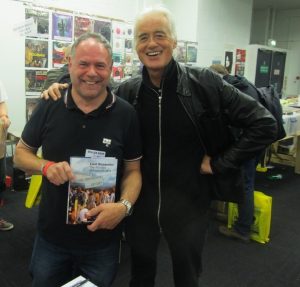
It was seven years ago today….1:
On this day in 2013, I launched the revised version of my Then As it Was Led Zeppelin At Knebworth 1979 book at the two day VIP Musicmania Fair at Olympia, November 16th/17th.
This Knebworth book launch at the VIP Musicmania Fair was a hugely enjoyable two days.
My fellow stall holder Jerry Bloom and I set up early on Saturday morning – it was great to see faces old and new over the two days – Marc Roberty long time Eric Clapton authority and author was the first to buy the book. There were a fair few key contributors to the book in attendance including Graeme Hutchinson who compiled the bootleg discography, Phil Tatterhsall who provided the cover photo and more plus Ian Avey, Phil Harris and Ian Coleman provided their respective I Was There memories. It was also good to see Classic Rock news editor Dave Ling ,and amongst others Krys Jantzen,Julian Walker ,Michael Stendahl from Sweden, Mark Taylor, Gary Steagles, Dennis McDonnell, Lausen Blair and Mark Winslade – Mark showed me a custom made Tight But Loose badge he had made to attend the Reading Festival in 1980 –classic!
It was of course an absolute thrill to have Jimmy Page drop by at the TBL stall in between his record shopping at the fair with Ross Halfin.
Jimmy was very complementary about the book which really was a fantastic accolade to say the least – and made all the hard work of producing the book worthwhile. He posed for this photo with me taken by Ross.
I gave him a copy of the book and he asked me to sign it for him – for which in return he signed one for me (now that’s what I call a fair deal!). ”Dave – well done!, Rock on!!” was his wonderful inscription.
When he asked what number I’d like in the ‘’book number ‘’ box Jimmy took the initiative and smiling mischievously, filled it in marking it book number ‘’666’’…
Unsurprisingly, this copy of my Knebworth book personally signed and numbered by Jimmy Page is one of my most prized Zep possessions…it was some moment all of seven years ago today……
Dave Lewis, November 16, 2020.
It was seven years ago today….2:
This was the second day of the launch of the revised version of my Then As it Was Led Zeppelin At Knebworth 1979 book at the two day VIP Musicmania Fair at Olympia.
I took the opportunity to try on this rather fetching Zozo jumper a perspective buyer of the book had brought in – this is the style of jumper Jimmy wore at the 1971 Electric Magic shows at Wembley Empire Pool in November 1971 …I think he looked better on him than it did me…
DL Diary Blog Update:
Friday November 13:
On the player the Paul Weller album On Sunset…the good lady Janet and I regard this as our summer album and it’s still providing much inspirational light on this dark November Friday night
Sunday November 14:
Sunday is silver CD day..after watching the brilliant David Crosby documentary on Sky Arts last night, loading up the brilliant 4 CD Crosby Stills & Nash 1990 compilation set…
Update here:
A tricky week – some good things, see inspirations below and some stressful things to deal with in the last couple of days. Once again Janet has been amazing in her support…anyway I have to get on with stuff to do and amongst other things I’ve been packing the Feather In The Wind book orders -many thanks to all who have ordered that. The rate of infection situation continues to be very worrying for us all and as ever, I hope you all stay safe and well.
Some particular inspirations this past week…
Watching the excellent Laurel Canyon documentary on Sky Arts….
Watching the brilliant and moving David Crosby documentary on Sky Arts…
A lovely phone call from Richard Cole…
Watching the newly surfaced Led Zep MSG February 3rd 1975 cine footage…
Thanks for listening – stay safe and well you very lovely people…
Dave Lewis – November 19, 2020
Until next time, stay safe and stay well…
Website updates written and compiled by Dave Lewis
Follow TBL/DL on Facebook:
https://www.facebook.com/tightbutloose.loose
The TBL/DL Facebook page has regular updates and photos – be sure to check it out


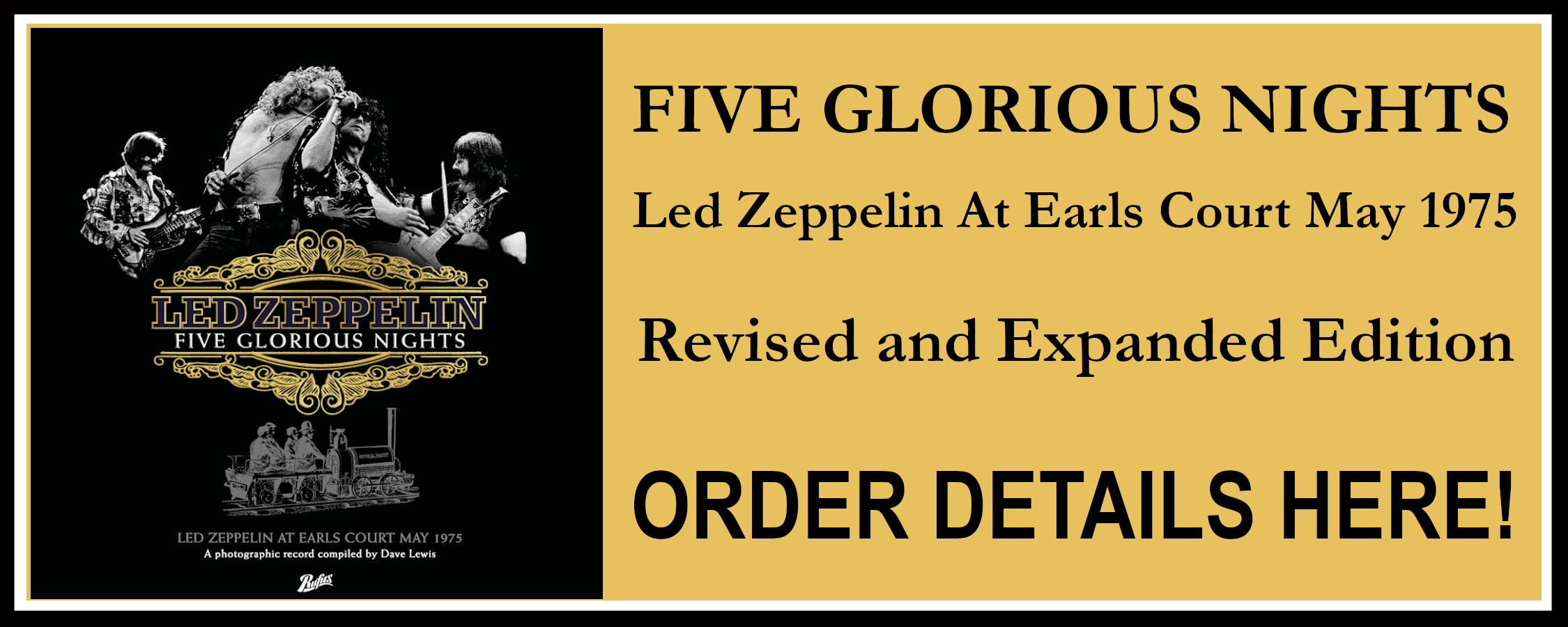


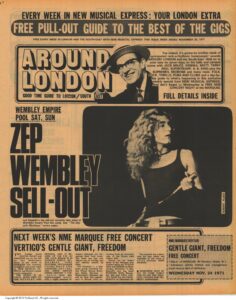
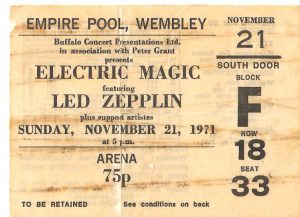
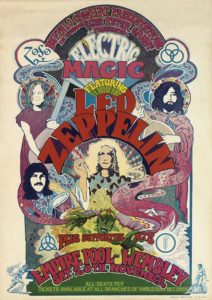
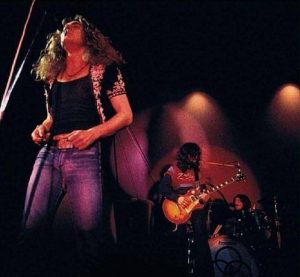
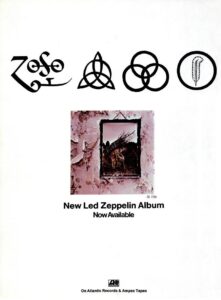
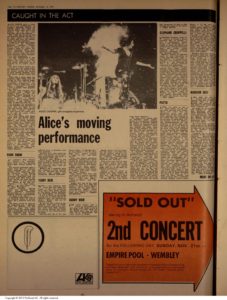
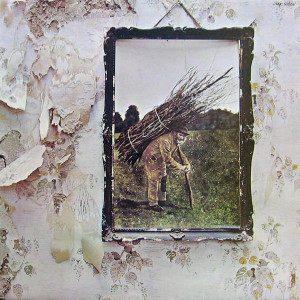
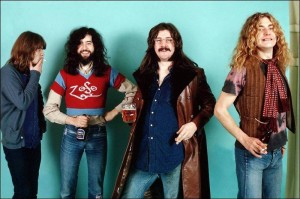
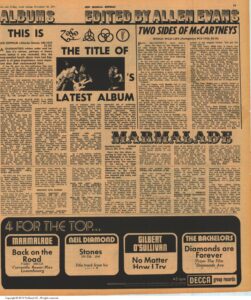
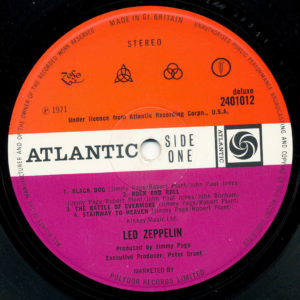
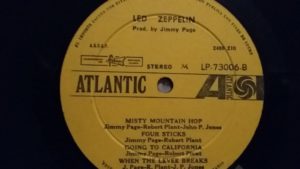
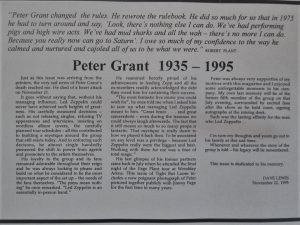
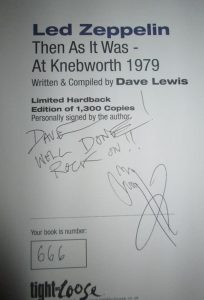
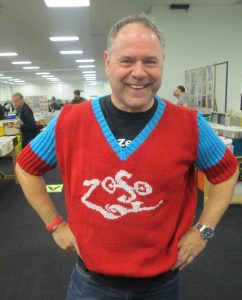

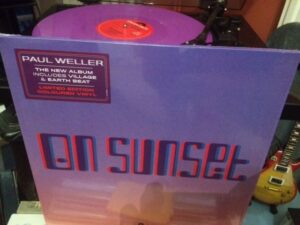
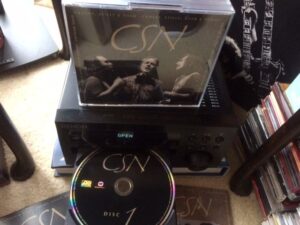









Belated but better late than never.
Rolling Stone magazine has been given a role of the archenemy of Led Zeppelin in the group’s accepted history — they trashed all things Zeppelin from Day One till the end. That’s not always the case. Lenny Kaye’s review of the fourth album is nothing short of sheer appraisal. I also recollect Physical Graffiti received quite a positive review, sort of constructive criticism, so to speak. I think, John Mendelsohn’s notorious slam down on the debut album made a lasting impact hence hostility. The first cut is the deepest.
Thanks Wools as ever
Dave,
Still one of my favorites, Then As It Was……..always a read I just love to spend time with to this day! I only had the pleasure of seeing the mighty Led Zep at MSG in New York twice. As a lifelong fan I always thought that Knebworth and the O2 were the must see’s. Your prose always makes me feel that I was at Knebworth! Thank you again for the sharing of fabulous memories…….
WOOLS
Las Vegas, Nevada
Leave your response!
TBL Products
About TBL
Tight But Loose Website edited by Dave Lewis and Gary Foy.
Tight But Loose Magazine created by Dave Lewis 1978. TBL/Web launched by Dave Linwood 1995. TBL logo by Mike Warry.
All written material and photographs are copyright © Tight But Loose. Not to be reproduced without prior permission.
Tight But Loose welcomes input / info / tour reports / CD reviews / CDR’s & Tapes on any Zep related topic past and present.
Archives
Recent Posts
Recent Comments
Tags
Views